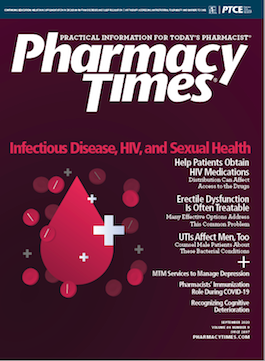Publication
Article
Pharmacy Times
Pharmacists Are Essential to Maintaining Immunizations During Pandemic
Author(s):
In a recent Pharmacy Times® webcast, several experts discussed how pharmacists’ roles are changing and some of the new precautions implemented at pharmacies.
With the approaching flu season and a vaccine for coronavirus disease 2019 (COVID-19) on the way, pharmacists are playing a more important role than ever in ensuring that patients remain up-to-date on immunizations.
For a recent Pharmacy Times® webcast, several experts discussed how pharmacists’ roles are changing and some of the new precautions implemented at pharmacies.
Although the COVID-19 pandemic has been massively disruptive to the medical field, Brian Hille, BSPharm, vice president of patient, specialty and wellness services at Albertsons Companies in Boise, Idaho, said that continuing to provide necessary services has become more important than ever. Because pharmacists provide a large percentage of immunizations across the country, maintaining that source is vital to ensuring patients’ ongoing health, he said.
“There [were] difficulties because there is a lot of uncertainty, and, rightfully so, a lot of fear, especially initially,” Hille said. “Face shields were not something that were normally in a pharmacy practice before COVID[-19], so we really had to go through a period of time where we [had to ensure] that we had all the personal protective equipment that our pharmacist would need in order to safely provide immunization services.”
Lauren Simko, PharmD, managing performance specialist at Pharmacy Development Services in Lake Worth, Florida, agreed, adding that independent pharmacies are also focusing on maintaining immunization services by adjusting operations according to their local, state, and regional safety concerns.
Smaller independent pharmacies in rural areas may be even more concerned about safety, she said. Ensuring staff safety becomes even more important when patients have no other nearby pharmacies at which to get medications.
Balancing patients’ health and pharmacy staff’s safety became a major goal during the early pandemic response and continues to affect pharmacies’ decisions. Hille noted that, luckily, policies to protect both priorities were implemented in time for the upcoming flu season—when influenza vaccinations will be all the more vital.
Technology has played a major role in keeping patients and staff safe, including having patients fill out online forms and performing medication counseling via phone or video chat. Simko said that the shift to a technology-based approach was extremely rapid at the beginning of the pandemic, and Hille said that, despite the circumstances, it is exciting to see technology pushed forward.
“Some of the ideas and thoughts and things that we wanted to do for a long time have moved to the top of the work list, which is wonderful,” Hille said. “And I think it’s really important from a touch-free kind of perspective that we’re moving in that direction as much as possible.”
This will become increasingly important during the coming flu season, Hille said.
With an estimated 190 million doses of the influenza vaccine being manufactured this year, a record number of vaccines will likely be distributed, said Jeff Goad, PharmD, MPH, chairman of the department of pharmacy practice at the Chapman University School of Pharmacy in Irvine, California. Hille agreed, noting that this is the heaviest prebooking season he has ever seen for pharmacies purchasing the influenza vaccine.
Regarding timing and administering the vaccine, Goad said that the Centers for Disease Control and Prevention (CDC) has sent mixed messages in the past. Whereas a physician’s office might begin administering the vaccine immediately in August or September, he noted some data have shown that the vaccine does not last as long in some populations, leading some strains in the quadrivalent and trivalent to give out before the end of the flu season.
“So [regarding] the timing of it, the CDC says if you get the vaccine, and you identify a patient on a one-on-one basis that you think should get it, you should [administer the vaccine to that patient],” Goad said. “Otherwise, [the CDC would] like you to wait for the mass campaigns [at the beginning of October].”
Focusing on delivering flu vaccines may be the best thing that pharmacists can do during the upcoming fall and winter months, until a vaccine for COVID-19 is released. Hille said that this may be a “perfect storm” with 2 infectious diseases, but pharmacists do have the ability to impact 1 of them.
“[With COVID-19] circulating at the same time as flu-vaccination season kicking off, and then the circulation of flu, [the perfect storm is] going to happen,” Hille said. “And so...as pharmacists working in [our] communities, I think that we’ve got a really great opportunity to take 1 of those 2 things away.”







